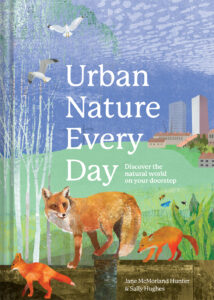A week of Urban Nature Every Day
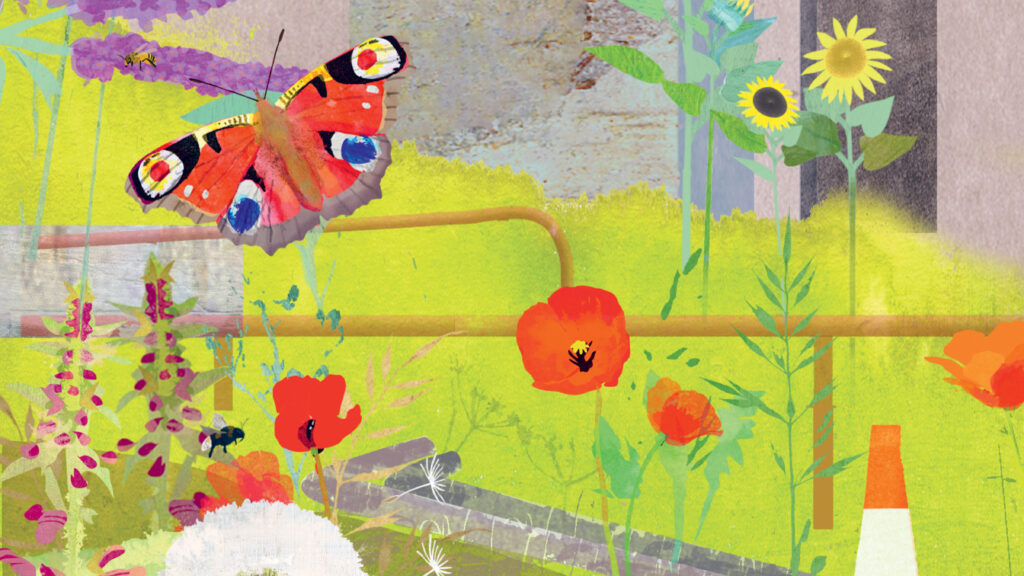
Discover the natural world on your doorstep this summer with Urban Nature Every Day. Here, nature enthusiasts and city-dwellers Jane McMorland Hunter and Sally Hughes take you on a stroll through a week of the wonderful nature and wildlife you can spot in urban areas at this time of the year.
by Jane McMorland Hunter & Sally Hughes
23 JULY
RAGWORT
Similar to groundsel, ragwort has clusters of yellow, daisy-like flowers. The petals of ragwort are longer than groundsel, and it tends to be taller, but if the plants aren’t growing next to one another that is of little help. Ragwort is very common in cities and there is both a London ragwort and an Oxford ragwort. In around 1700, the latter was brought to Britain from the slopes of Mount Etna in Sicily, and planted in the Botanic Garden in the city of Oxford. A hundred years later it was spotted growing wild on the walls outside the Botanic Garden. Like so many wild flowers it spread across the country with the development of the railway lines, which offered unintentional transport for the seeds and undisturbed growing sites on the embankments.

24 JULY
CIRRUS CLOUDS
Cirrus are the pretty, wispy clouds very high up making feathery patterns against the sky. One of our favourites, they are the whitest of white and look beautiful against a deep blue sky or taking on the colours of a sunset. Painters adore cirrus. In weather terms they indicate a change on the way, but although they are formed from ice crystals, they don’t drop rain themselves. Cirrus clouds are known as ‘mares’ tails’ and they do look a bit like horses’ tails. An old adage states that ‘Mares’ tails and mackerel scales make lofty ships carry low sails’, a nod to when sailors relied on clouds to warn of approaching bad weather.
25 JULY
WHITE BUTTERFLIES
The cabbage white or more correctly the large white, small white and green-veined white butterflies are often found around vegetable patches and allotments. Among our most common butterflies, they are attracted to all sorts of brassicas, not just cabbages. They have creamy white wings that look a little yellowish underneath, black or greyish wingtips and bodies and sometimes black dots on the forewings. The green-veined white, predictably, has green-grey veins on the undersides of its wings. They lay yellowish eggs on the underside of leaves (very bad news for your cabbages). If the weather is warm, you can get two generations of whites in a single year.
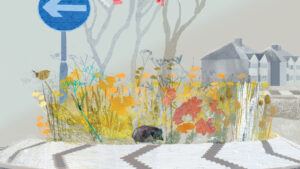
26 JULY
HOUSEFLY
We find houseflies simultaneously fascinating and repellent. Maybe it was watching David Cronenberg’s The Fly back in the 1980s – that one had us hiding behind the sofa for days. The next time you see a fly, look closely, their eyes are huge. In fact, they are made up of thousands of individual lenses that combine to produce a single image meaning, we think, that a fly sees the world almost like looking through a kaleidoscope. Because of the size and complexity of their ‘eyes’ houseflies can actually see behind themselves and this, combined with super-fast reaction times, helps keep them safe from natural predators and the fly swat. And just to add to their strangeness, they taste through their feet, which may explain why they like to walk over their food.
27 JULY
ALGAE
Scientists have yet to come up with a universally accepted definition of algae; it is not a true plant and yet neither is it a fungus. In the sea the most obvious algae is seaweed, while on land the group includes a huge range of different organisms that live in water or on damp sites. Algae has an important role as the base of the food chain for aquatic organisms and it absorbs carbon dioxide and releases oxygen. So far so good, but algal bloom or thick layers can grow when excess nutrients build up in water, usually caused by human mis-management. The bloom can cause the water temperature to rise, encouraging more growth in a vicious circle. It looks unsightly, and some of these algae contain toxins, which are harmful to humans, wildlife and the environment.
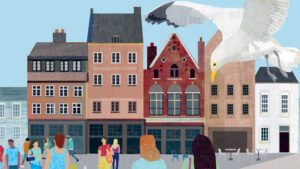
28 JULY
ROSEBAY WILLOWHERB
This is often found on the same sites as ragwort, with both plants happily making the most of rough, untended land. The tall, pink-purple spikes are actually made up of tiny flowers, each with four petals, the grey-green leaves resembling those of the willow. In autumn, clumps of the plant resemble bonfires as the leaves turn every shade of red and orange. It will happily colonize burnt land, earning it the name fireweed and during the Second World War its appearance in bomb craters earned it the name bombweed.
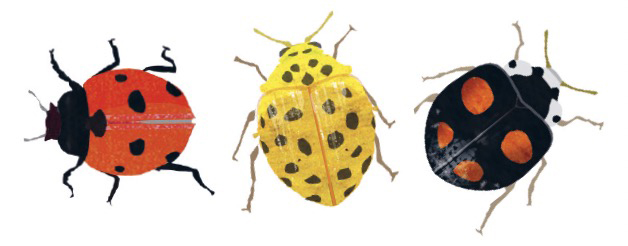
29 JULY
LADYBIRD
The old nursery rhyme ‘Ladybird, ladybird fly away home’ was a warning to this prettiest of tiny beetles when stubble was being burnt and their homes were in danger. The most recognizable ladybirds are the two and seven spot kind with their scarlet coats and black spots but if you look closely there are over 27 common species around in a variety of colours. Sometimes known as ladybugs, for many cultures they are considered harbingers of good luck.
The lady in the name ladybird refers to the Virgin Mary. According to some legends medieval farmers plagued by pests prayed to the Holy Mother and their crops were saved by little red bugs which they came to call lady beetles and later ladybirds. Others say the red of their backs represents her cloak and the seven spots her seven sorrows.
When stressed ladybirds excrete a yellowish oily substance from their knees (yes, knees, we thought that was weird too) which tastes smells and tastes unpleasant. It is also thought the pus-like substance might also be a kind of camouflage, making the predator think this ladybird is sickly and therefore far less appealing as a tasty snack.
30 JULY
ERMINE MOTH
Not all moths are equal and ermine moths are the black-and-white Dalmatians of the moth world. The caterpillars are creamy white with black markings and live between extensive webs in trees or on plant or leaf litter, but occasionally and most spectacularly, in some very odd places – we once saw an entire roundabout covered with moth webs. The adults, with their black dotted white wings, emerge in July and August when they mate and lay their eggs; the larvae overwinter under the protection of webs being fully grown and ready to start the cycle again the following summer. They are an outdoor moth that enjoys parks and gardens and, like most moths, are attracted to light so you might see adult females fluttering around your garden lighting.
Extracted from Urban Nature Every Day by Jane McMorland Hunter and Sally Hughes, available now from our web shop.
Illustrations by Lou Baker-Smith.

